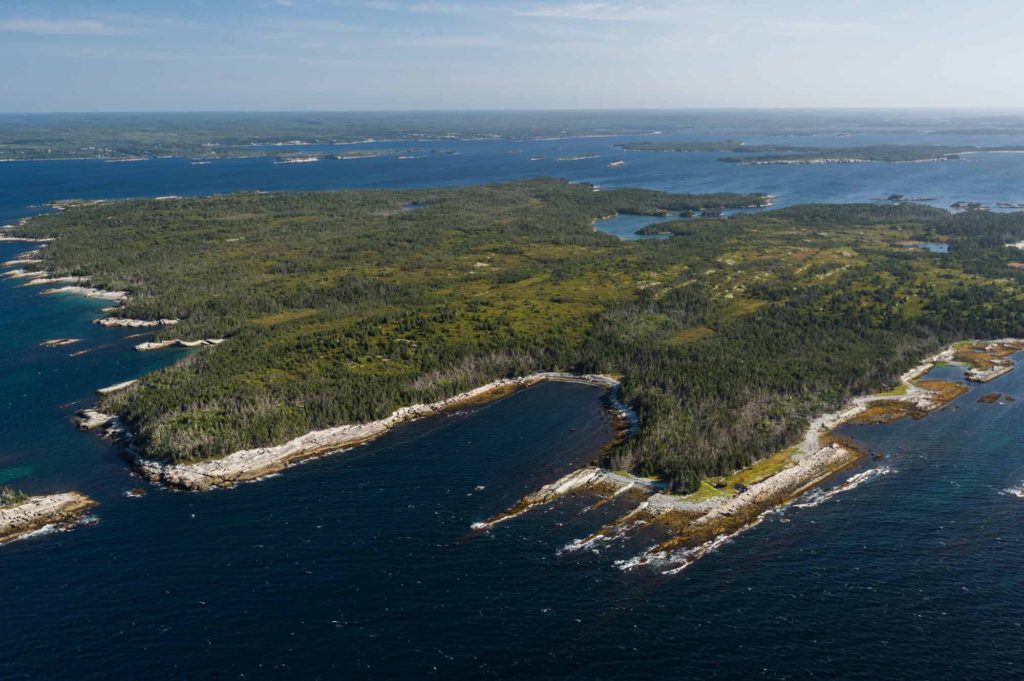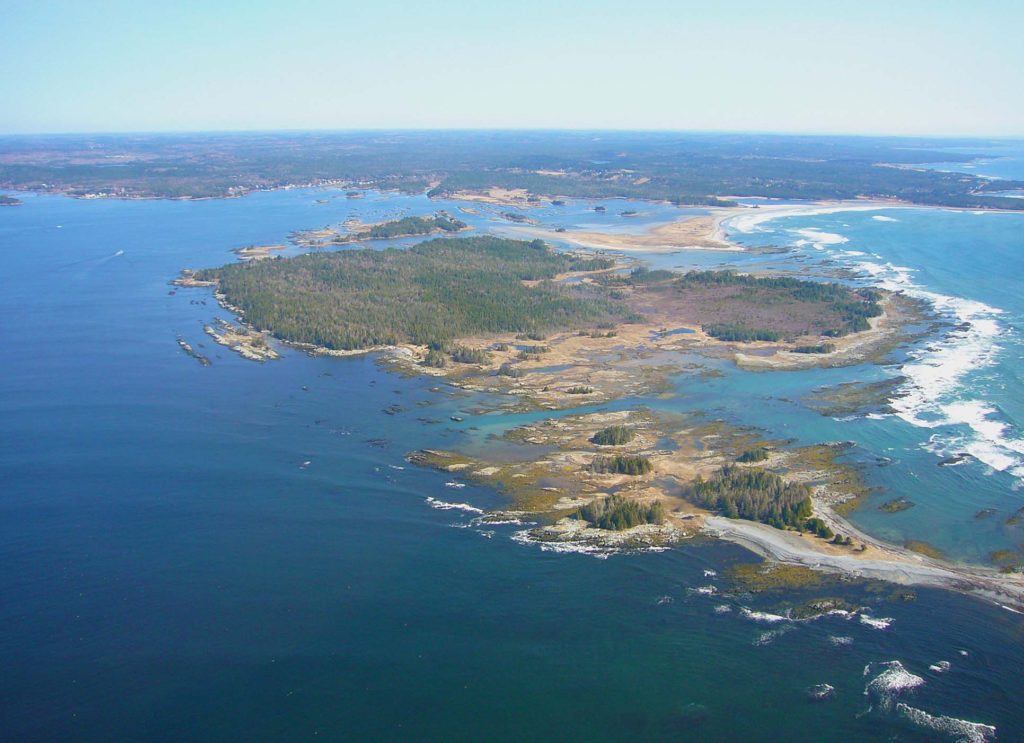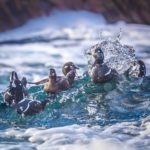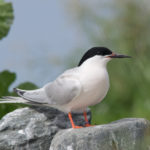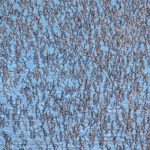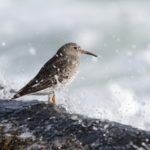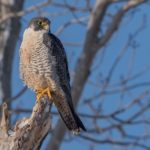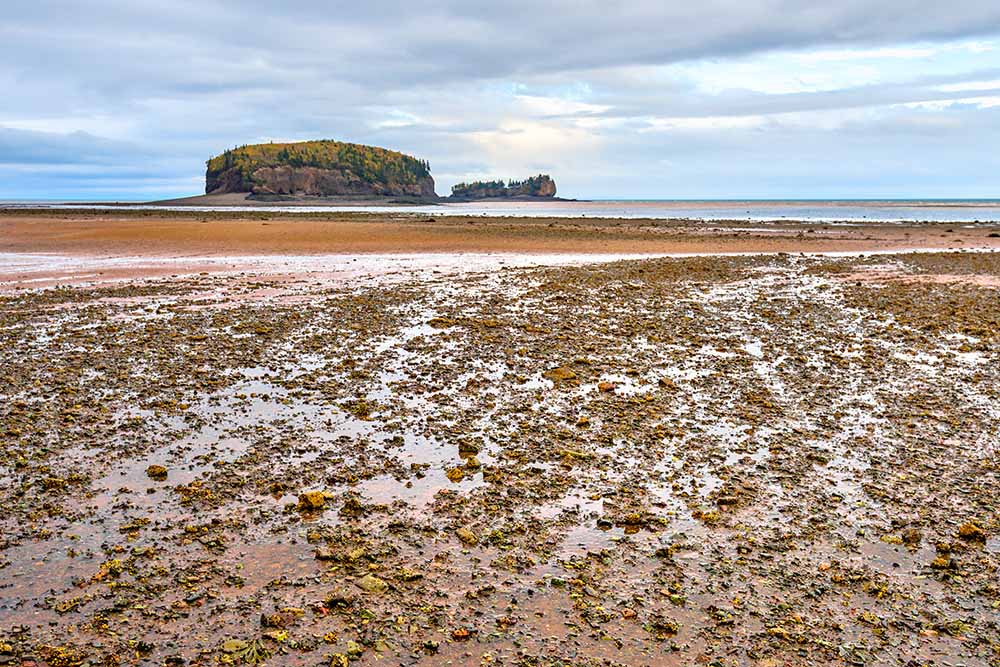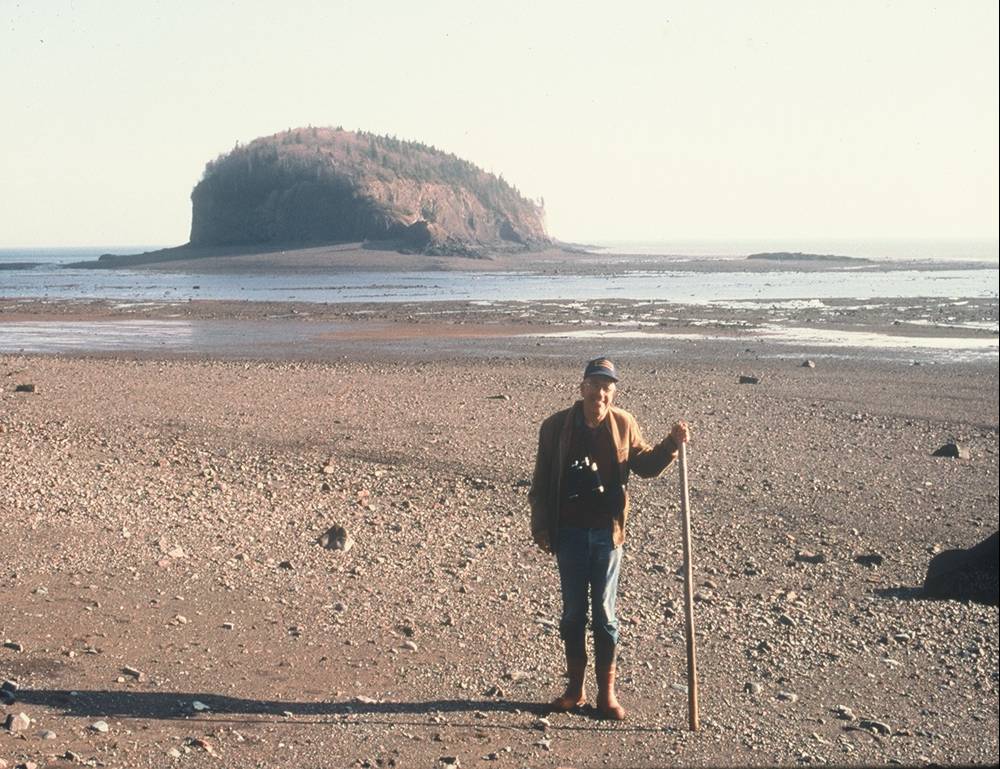Coastal Islands – an important intersection of bird and biodiversity conservation
07 Aug 2019
By Jessica Bradford, Conservation Project Coordinator (Southwest Nova)
Islands throughout the world are known for supporting a vast percentage of global biodiversity, yet they are isolated and fragile ecosystems threatened by a variety of pressures like development and invasive species. Island ecosystems actually have the highest proportion of all recent species extinctions1.
In Nova Scotia, we have a shoreline that is studded with islands of all shapes and at varying distances from the mainland. Our coastal islands are a special habitat type where there is an important intersection between two of the Nature Trust’s conservation focus areas—‘coastal treasures’ and ‘habitat for birds’. Coastal islands provide refuge for breeding seabirds, places for migratory birds like songbirds, shorebirds and raptors to feed and rest, overwintering habitat for waterbirds, and year-round homes to certain non-migratory birds.
Seeing as an overwhelming majority of coastal island habitat is privately-owned in my project focus area of Southwest Nova (a whopping 96%) and very few of these islands (only about 6%) are formally conserved, targeted private land conservation is essential to advance permanent habitat protection.
Over our past 25 years, we have conserved nearly 50 coastal island properties throughout the entire province, amounting to more than 3150 acres of island habitat protected. In fact, our history is rooted in coastal island conservation. Our very first conservation lands were a pair of coastal islands, “the Brothers,” in the inner Bay of Fundy near Parrsboro, made possible by a generous donation from a conservation-minded landowner named Mr. Jack Herbin in 1995. The 100 Wild Islands Legacy Campaign to protect a remote stretch of coastal island wilderness along the Eastern Shore was a flagship conservation campaign and major milestone that helped put our small (and mighty) organization on the map.
More recently, we’ve been actively conserving privately-owned coastal islands in southwest Nova. We’ve partnered with organizations like the Nova Scotia Bird Society and Acadia University to ensure a number of islands important for migratory and breeding birds are protected forever, including Bon Portage Island and several of the Bald Islands. This past spring, we also protected over 600 acres of important bird habitat on Seal Island (official conservation announcement to come!). We are working with many partners in the Kespukwitk Conservation Collaborative to reduce threats to coastal island habitat and biodiversity through integrated conservation and stewardship initiatives.
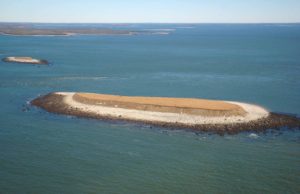
Inner Bald Island, Yarmouth County, protected in partnership with the Nova Scotia Bird Society – Credit: Glen Parsons
We are facing a global biodiversity crisis and the need to conserve important bird habitat like coastal islands is made even more urgent by the alarming declines of migratory birds since the 1980s 2,3. Conservation priorities for migratory birds that have been put forward on an international scale include to 1) protect, retain and restore high quality bird habitat on a flyway and landscape scale and 2) safeguard and manage networks of critical sites that are key to the migration and survival of migratory species 3. Seeing as the location of our beautiful coastal province falls along a major migration route called the ‘Atlantic Flyway’, we now need to act and protect important island habitat on a local scale.
Conservation for migratory birds that travel far distances, crossing many political boundaries along the way, can be particularly challenging, however. The main threats to certain species’ survival such as habitat loss or degradation could actually be more of an issue in their southern wintering grounds. But, it is still imperative to do what we can here in our corner of the world. This includes implementing private land conservation as a tool where and when it makes sense like for protecting breeding bird colonies and hotspots for migratory bird diversity, as well as establishing assemblages of protected islands to maintain connectivity and ensure a mosaic of current and future habitat for many species.
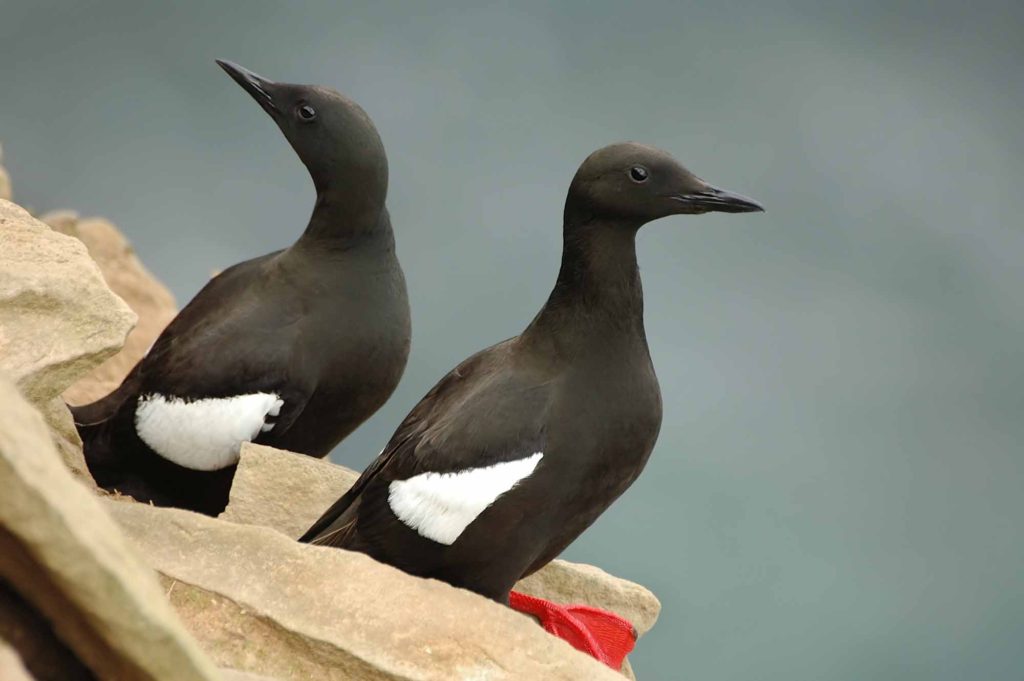
Over August 16 and 17, we are hosting two events that will help unveil some of the mysteries of our coastal island treasures and celebrate these special places—a Seal Island Conservation Announcement in Clark’s Harbour and a Coastal Islands Conservation Open House in Yarmouth. We hope you will join us for one or both of these events!
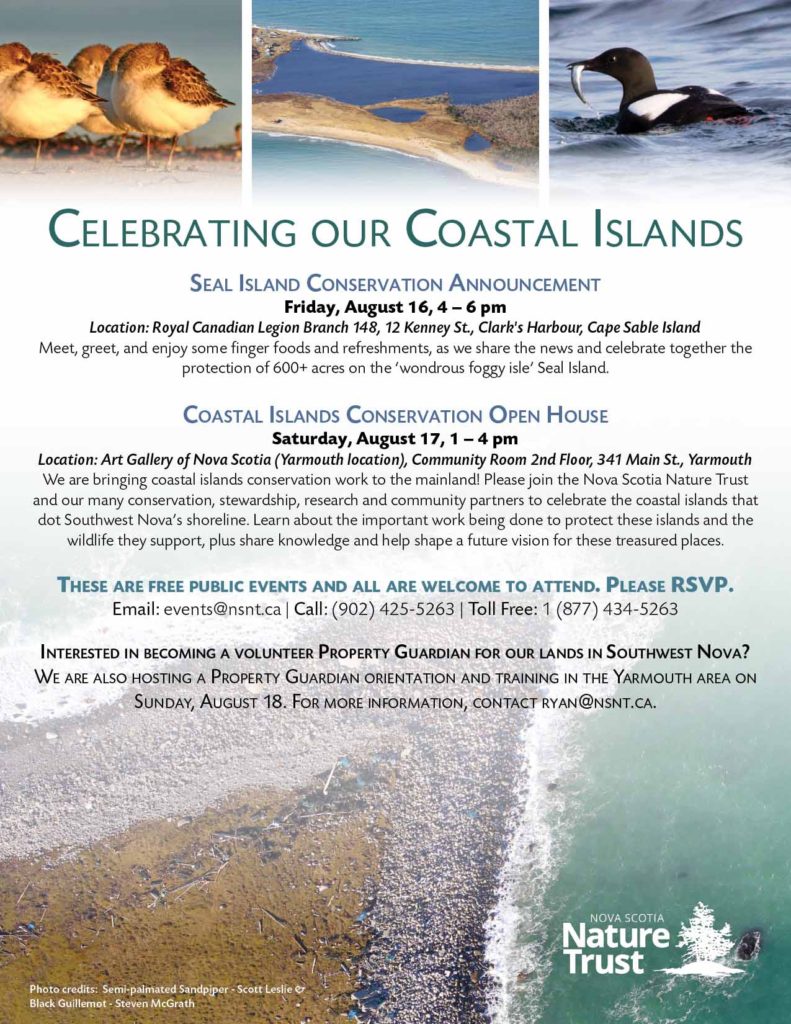
We sincerely thank recent support received from the Bonnell Cove Foundation, R. Howard Webster Foundation and William P. Wharton Trust for our coastal island and bird habitat conservation work. We also thank a number of individual community members in the region who have helped us out by sharing local knowledge, observations and to those who have even kindly offered up their own resources (like boats to get out to some of the islands!). Please stay tuned as our work on coastal islands in southwest Nova continues and evolves. Feel free to reach out with any coastal island-related comments or ideas: jessica@nsnt.ca or (902) 425-5263.
Further reading
- Ricketts, T. H. et al. Pinpointing and preventing imminent extinctions. PNAS 102, 18497–18501 (2005).
- Kirby, J. S. et al. Key conservation issues for migratory land- and waterbird species on the world’s major flyways. Bird Conserv. Int. 18, S49–S73 (2008).
- Galbraith, C. A., Jones, Ti., Kirby, J. & Mundkur, T. A Review of Migratory Bird Flyways and Priorities for Management. (2014).

